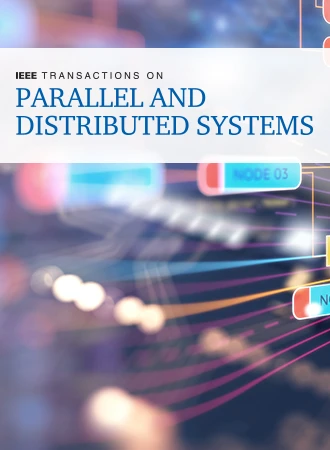面向未来交叉口自动联网车辆管理的安全多智能体深度强化学习
IF 5.6
2区 计算机科学
Q1 COMPUTER SCIENCE, THEORY & METHODS
IEEE Transactions on Parallel and Distributed Systems
Pub Date : 2025-06-16
DOI:10.1109/TPDS.2025.3580092
引用次数: 0
摘要
随着互联和自动驾驶汽车(vehicle)的发展,自主交叉口管理(AIM)系统正在兴起,可以在没有交通信号的城市交叉口实现安全、高效的交通流。然而,现有的AIM系统,无论是基于传统的优化控制方法,还是基于机器学习,分别存在计算效率低和安全性鲁棒性不足的问题。为了克服这些限制,我们提出了一种基于安全多智能体深度强化学习(MADRL)的创新AIM方案。我们最初将安全MADRL问题建模为约束马尔可夫博弈(CMG),并使用我们的多智能体投影约束策略优化(MAPCPO)来解决它。该方法首先对Kullback-Leibler散度信任域内的策略更新进行优化,使性能最大化,然后将优化后的策略投影到风险约束的边界上,从而保证安全性。在此基础上,我们引入了一种风险有界的自主交叉口管理RL (RbRL-AIM)算法。该算法采用了由基于LSTM的策略神经网络、奖励价值网络和风险神经网络组成的体系结构。通过MAPCPO策略,这些组件可以从复杂和随机的十字路口交通环境中持续学习,从而促进十字路口车辆的安全、高效和平稳控制。我们的方法在CARLA模拟中得到了验证,与基线优化控制方法相比,在计算和交通效率方面取得了显著的进步。与无安全意识的MADRL方法相比,我们的方法实现了零碰撞,并改善了乘坐舒适性。本文章由计算机程序翻译,如有差异,请以英文原文为准。
Safe Multi-Agent Deep Reinforcement Learning for the Management of Autonomous Connected Vehicles at Future Intersections
As Connected and Autonomous Vehicles (vehicle) evolve, Autonomous Intersection Management (AIM) systems are emerging to enable safe, efficient traffic flow at urban intersections without traffic signals. However, existing AIM systems, whether based on traditional optimization control methods or machine learning, suffer from low computational efficiency and a lack of robustness in ensuring safety, respectively. To overcome these limitations, we propose an innovative AIM scheme rooted in Safe Multi-Agent Deep Reinforcement Learning (MADRL). We initially model the safe MADRL problem as a constrained Markov game (CMG) and tackle it with our multi-agent projective constrained policy optimization (MAPCPO). This method first optimizes policy updates within the Kullback-Leibler divergence trust region to maximize performance, and then projects these optimized policies onto the bounds of risk constraints, thus ensuring safety. Building on this, we introduce a Risk-Bounded RL for Autonomous Intersection Management (RbRL-AIM) algorithm. This algorithm adopts an architecture that consists of an LSTM based policy neural network, a reward value network, and a risk neural network. These components, through the MAPCPO policy, enable continuous learning from complex and random intersection traffic environments, thereby facilitating the safe, efficient, and smooth control of vehicles at intersections. Our method is validated in a CARLA simulation, showing significant gains in computational and traffic efficiency over baseline optimization control methods. Compared to non-safety-aware MADRL methods, our approach achieves zero collisions and improved ride comfort.
求助全文
通过发布文献求助,成功后即可免费获取论文全文。
去求助
来源期刊

IEEE Transactions on Parallel and Distributed Systems
工程技术-工程:电子与电气
CiteScore
11.00
自引率
9.40%
发文量
281
审稿时长
5.6 months
期刊介绍:
IEEE Transactions on Parallel and Distributed Systems (TPDS) is published monthly. It publishes a range of papers, comments on previously published papers, and survey articles that deal with the parallel and distributed systems research areas of current importance to our readers. Particular areas of interest include, but are not limited to:
a) Parallel and distributed algorithms, focusing on topics such as: models of computation; numerical, combinatorial, and data-intensive parallel algorithms, scalability of algorithms and data structures for parallel and distributed systems, communication and synchronization protocols, network algorithms, scheduling, and load balancing.
b) Applications of parallel and distributed computing, including computational and data-enabled science and engineering, big data applications, parallel crowd sourcing, large-scale social network analysis, management of big data, cloud and grid computing, scientific and biomedical applications, mobile computing, and cyber-physical systems.
c) Parallel and distributed architectures, including architectures for instruction-level and thread-level parallelism; design, analysis, implementation, fault resilience and performance measurements of multiple-processor systems; multicore processors, heterogeneous many-core systems; petascale and exascale systems designs; novel big data architectures; special purpose architectures, including graphics processors, signal processors, network processors, media accelerators, and other special purpose processors and accelerators; impact of technology on architecture; network and interconnect architectures; parallel I/O and storage systems; architecture of the memory hierarchy; power-efficient and green computing architectures; dependable architectures; and performance modeling and evaluation.
d) Parallel and distributed software, including parallel and multicore programming languages and compilers, runtime systems, operating systems, Internet computing and web services, resource management including green computing, middleware for grids, clouds, and data centers, libraries, performance modeling and evaluation, parallel programming paradigms, and programming environments and tools.
 求助内容:
求助内容: 应助结果提醒方式:
应助结果提醒方式:


